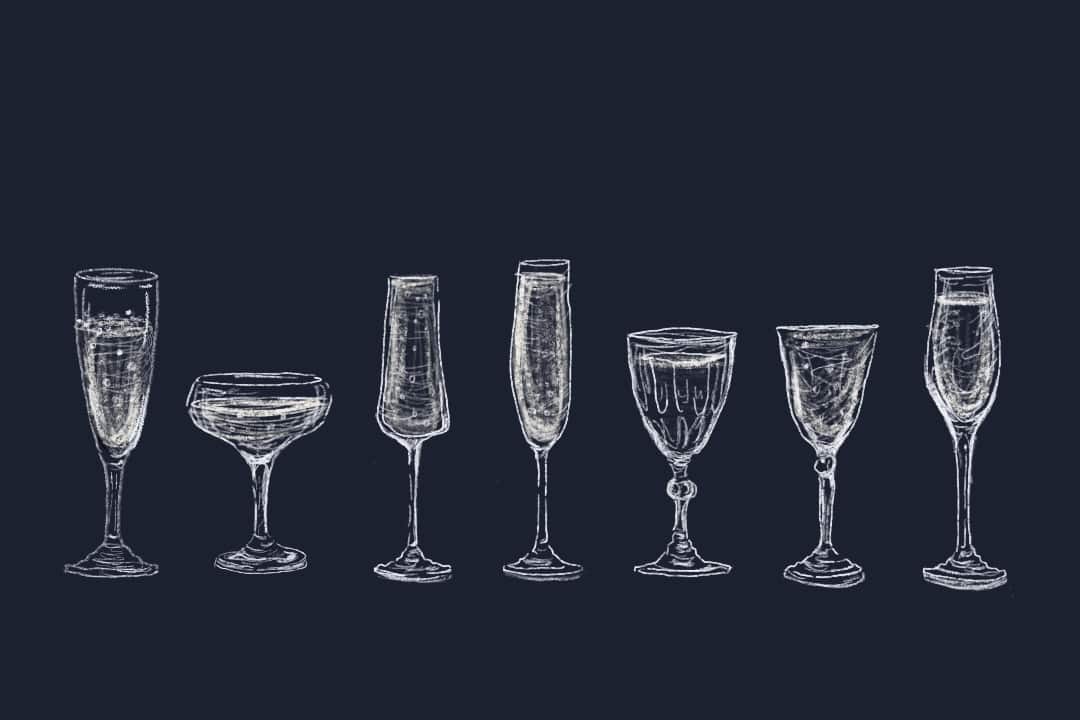Few items in the culinary world are as synonymous with luxury and class as champagne. Revered for its complex palate, imbued with notes of brioche and toasted almonds, and its effervescent bubbles, this iconic beverage has long been the mainstay of celebrations and special occasions.
Despite their perception as a commemorative drink, champagnes — and sparkling wines, more broadly — are far more versatile wines with myriad pairing options. Due to their exclusivity and lustrous label, champagnes command a hefty price; starting at around $50 at the LCBO, the cost prevents most of us who aren’t moneyed caricatures from HBO’s Succession from adding them to our regular wine repertoire. But worry not; many lesser-known bubbly alternatives exist at a fraction of the cost.
Readers who’ve hung around pedantic winos or meticulous Frenchmen long enough have no doubt been admonished that Champagne denotes a specific region northeast of Paris, not a type of wine. And while the name has been trademarked, the method, known as the “traditional” or the “Champagne” method, is replicated worldwide.
What is the “traditional method”?
Whether sparkling or still, all wine is created through the process of yeast reacting with sugar, known as alcoholic fermentation. This reaction converts the sugars in grape juice into ethanol and carbon dioxide (CO2).
In still wine, the CO2 gas dissipates over time. However, in Champagne-style sparkling wines, a second fermentation occurs inside the bottle. After bottling the wine, winemakers add more yeast and seal the bottle with a cork, trapping the CO2. This in-bottle fermentation imparts Champagne-style wines with their signature bready notes.
In contrast, the “tank method” — exemplified by Prosecco from Italy’s Veneto region — involves adding yeast to a large tank rather than individual bottles. The wine undergoes its secondary fermentation in this tank before bottling. This method produces a lighter wine, typically without the yeasty, brioche-like notes found in traditional method sparkling wines.
Crémant: Your budget-friendly alternative
In France, sparkling wines produced outside the Champagne region using the traditional method are collectively known as Crémant, with each variety bearing the name of its region. For instance, Crémant de Bourgogne, hailing from Burgundy, just three hours from Champagne, shares key grape varieties such as Chardonnay and Pinot Noir with its illustrious cousin. The Bailly Lapierre Réserve Brut Crémant de Bourgogne, available for $24.95 at the LCBO, represents significant value, offering much of the same nose and palate as entry-level Champagne, for half the price. For something slightly different, you can opt for Crémant de Loire — a real bargain at $22.95 — from the Loire Valley, made from the herbaceous Cabernet Franc grape.
Beyond France’s borders, many wine-producing countries have developed their own versions of Champagne-style sparkling wines. Spain is known for its Cava and Italy for its Franciacorta, while Germany and Austria produce Sekt. In South Africa, a similar wine is labelled as Cap Classique. And, due to climate change, the English have also found a new arena to rival the French, crafting sparkling wines in the country’s southern regions such as Sussex.
Sparkling wines and vintages
Vintage dating in sparkling wines, particularly Champagne, is rare due to historical climatic challenges. Champagne’s unpredictable weather has often limited grape yields, prompting winemakers to blend reserve wines from different years. It was only in the best years that Champagne houses would declare vintages — you’ve likely heard of Dom Perignon, the vintage label of Moët & Chandon.
This practice of blending the best years’ wine ensured consistent quality and financial viability. Although in recent years climate change has stabilized conditions, allowing more frequent vintage declarations, the tradition of creating a non-vintage base cuvée (blend) endures in Champagne houses. This cuvée, blending multiple vintages, defines a house’s style and offers a consistent taste profile year after year, a tradition that the broader sparkling wine world continues to follow.
How to pair sparkling wines
The versatility of sparkling wines stems from their high acidity, diverse styles, signature bubbles, and relatively low alcohol content. This acidity is crucial in balancing richer, more decadent dishes. A classic example is the pairing of champagne with fried chicken; the wine’s acidity and effervescence seamlessly cut through the saltiness and fat of the dish. For a lighter option, champagne and popcorn make a fun combination. Additionally, the acidity in sparkling wines acts as an appetite stimulant, rendering them perfect as aperitifs.
Sparkling wines also vary significantly in sweetness levels. Terms like ‘brut’ on a label indicate dryness, with Brut Nature and Extra Brut being even less sweet. Conversely, labels such as Extra Dry, Dry, Demi-Sec, and Doux denote increasing levels of sweetness. Sparkling wines on the sweeter side are ideal companions for spicy foods — a sweeter bubbly with Indian cuisine is a personal favourite.
It’s a shame that sparkling wines have largely been relegated to perfunctory props for celebration; their range and versatility extend far beyond such myopic choices. I would propose, dear reader, that the next time you select a wine to serve or pair, consider a sparkling option. Whether it’s a distinguished Champagne or a budget-friendly Crémant, there’s a sparkling wine to suit every budget, palate, and occasion.



No comments to display.